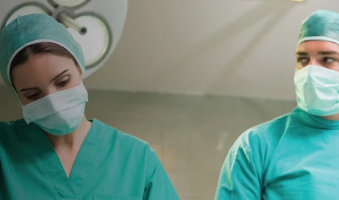Anaesthesia | Obstetrics | The Fetal Circulation



The Fetal Circulation
Session Overview
Description
This session describes circulation and oxygen delivery in the fetus with particular reference to control of the fetal circulation and the transition to the neonatal circulation at birth.
Learning Objectives
By the end of this session you will be able to:
- Describe the fetal circulation
- List the major factors influencing the fetal circulation and the circulatory changes at birth
- Describe the process of gas transfer across the placenta and oxygen delivery to the fetus
- List the major factors influencing drug transfer across the placenta
Fetal circulation is markedly different from adult circulation.
In the fetus, gas exchage does not occur in the lungs but in the placenta. The placenta receives deoxygenated blood from the umbilical arteries and returns oxygenated blood to the fetus via the umbilical vein (Fig 1).
In addition, the fetal cardiovascular system is designed in such a way that the most highly oxygenated blood is delivered to the myocardium and brain.
These circulatory adaptations are achieved in the fetus by both the preferential streaming of oxygenated blood and the presence of intracardiac and extracardiac shunts. Therefore, the fetal circulation can be defined as a 'shunt-dependent' circulation.
It is important for anyone involved in obstetric and paediatric anaesthesia to understand the distinction between fetal and neonate circulation.
- Anaesthesia Fundamentals | Physiology | Ventilatio...
- Posted By eIntegrity Healthcare e-Learning
- Posted Date: 2024-12-26
- Location:Online
- This session describes how and why ventilation and perfusion vary in the healthy lung. Causes of hypoxia, such as hypoventilation, increased dead space and shunt, are discussed to help the trainee explain and manage hypoxia clinically.
- Anaesthesia Fundamentals | Physiology | Pulmonary ...
- Posted By eIntegrity Healthcare e-Learning
- Posted Date: 2024-12-26
- Location:Online
- This session covers the measurement and clinical importance of lung volumes, including functional residual capacity and dead space. Information regarding the performance and interpretation of flow-volume loops is also included.
- Anaesthesia Fundamentals | Physiology | Co2 Carria...
- Posted By eIntegrity Healthcare e-Learning
- Posted Date: 2024-12-26
- Location:Online
- This session covers the physiology of how carbon dioxide is carried by blood, including its conversion into bicarbonate ions and the role of the red blood cell and haemoglobin in this process. The session also describes how buffers work, and the fundament
- Anaesthesia Fundamentals | Physiology | Function o...
- Posted By eIntegrity Healthcare e-Learning
- Posted Date: 2024-12-26
- Location:Online
- This session focusses on the function of haemoglobin in oxygen (O2) carriage from the lungs to other tissues where cells are supplied with the O2 required for oxidative phosphorylation in the mitochondria. We will cover the structure
- Anaesthesia Fundamentals | Physiology | Gaseous Ex...
- Posted By eIntegrity Healthcare e-Learning
- Posted Date: 2024-12-26
- Location:Online
- This session will introduce you to the physiological effects of altitude and the adaptations that occur with acclimatization. It also introduces the pathology and physiology of high pressure and decompression.
